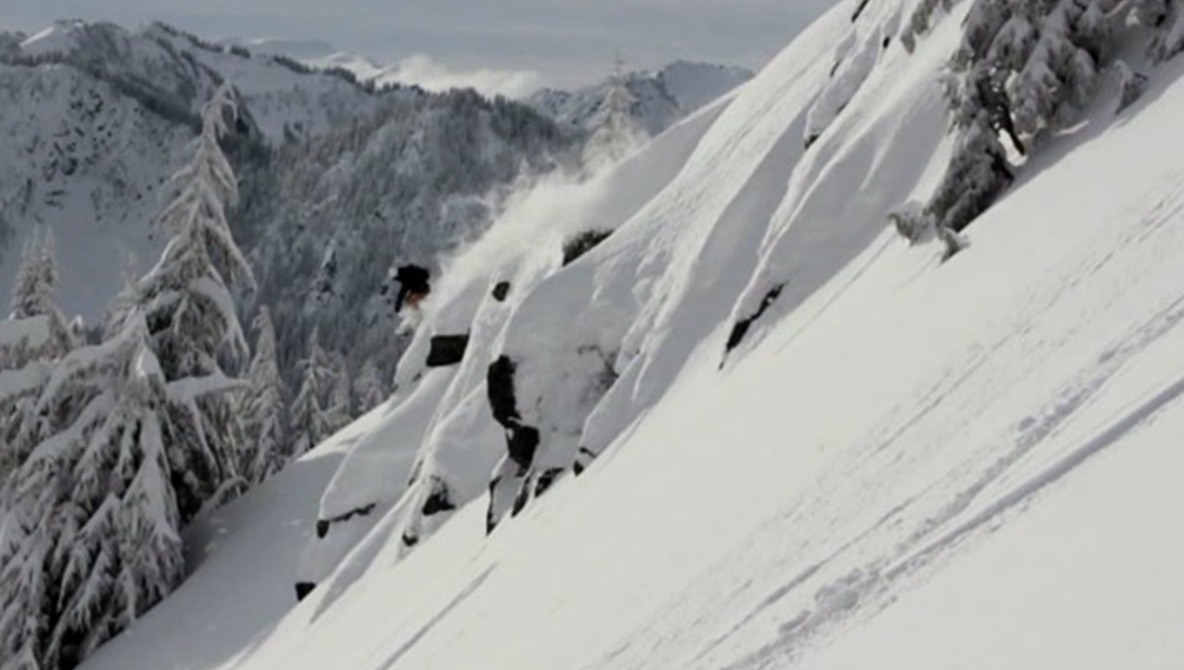The New York Times just released an absolutely incredible piece of journalism titled 'Snow Fall: The Avalanche at Tunnel Creek,' which is a story told through the use of still images, video, computer animations and one hell of a piece of writing. I have to say that this looks like (I at least hope) the future of editorial journalism. It's been a long time since I've read, watched, or looked at a piece that captivated me like this one.
Using a variety of media, author John Branch guides the reader through a heart-pounding and adrenaline-filled story of a group of skiers that are caught up in the events of one of the scariest and most dangerous occurrences that a skier or snowboarder can find themselves in: an avalanche in unpatrolled terrain. Having spent the vast majority of my life living near mountains and having a pair of skis or a snowboard strapped to my feet ever since I was able to discern light from dark, this story definitely hit home.
The combination of maps, videos, recordings, photos and writing is just gorgeous. I much expect the photojournalist, or rather journalist of the future to be fluent in all of these media in order to be successful with it as a career. If you're a working photojournalist now or are looking to get into photojournalism, take a good hard look at this piece because I fully believe that stories like this are going to become the norm, especially given the rate at which society has embraced digital methods of news delivery.
The story starts with a first-hand account by professional skier Elyse Saugstad of what being in an avalanche feels like, and the sense of impending death that comes along with it:
"The snow burst through the trees with no warning but a last-second whoosh of sound, a two-story wall of white and Chris Rudolph’s piercing cry: “Avalanche! Elyse!”
The very thing the 16 skiers and snowboarders had sought — fresh, soft snow — instantly became the enemy. Somewhere above, a pristine meadow cracked in the shape of a lightning bolt, slicing a slab nearly 200 feet across and 3 feet deep. Gravity did the rest.
Snow shattered and spilled down the slope. Within seconds, the avalanche was the size of more than a thousand cars barreling down the mountain and weighed millions of pounds. Moving about 7o miles per hour, it crashed through the sturdy old-growth trees, snapping their limbs and shredding bark from their trunks.
The avalanche, in Washington’s Cascades in February, slid past some trees and rocks, like ocean swells around a ship’s prow. Others it captured and added to its violent load.
Somewhere inside, it also carried people. How many, no one knew.
The slope of the terrain, shaped like a funnel, squeezed the growing swell of churning snow into a steep, twisting gorge. It moved in surges, like a roller coaster on a series of drops and high-banked turns. It accelerated as the slope steepened and the weight of the slide pushed from behind. It slithered through shallower pitches. The energy raised the temperature of the snow a couple of degrees, and the friction carved striations high in the icy sides of the canyon walls.
Elyse Saugstad, a professional skier, wore a backpack equipped with an air bag, a relatively new and expensive part of the arsenal that backcountry users increasingly carry to ease their minds and increase survival odds in case of an avalanche. About to be overtaken, she pulled a cord near her chest. She was knocked down before she knew if the canister of compressed air inflated winged pillows behind her head.
She had no control of her body as she tumbled downhill. She did not know up from down. It was not unlike being cartwheeled in a relentlessly crashing wave. But snow does not recede. It swallows its victims. It does not spit them out.
Snow filled her mouth. She caromed off things she never saw, tumbling through a cluttered canyon like a steel marble falling through pins in a pachinko machine.
At first she thought she would be embarrassed that she had deployed her air bag, that the other expert skiers she was with, more than a dozen of them, would have a good laugh at her panicked overreaction. Seconds later, tumbling uncontrollably inside a ribbon of speeding snow, she was sure this was how she was going to die."
To continue reading, head over to the NYT site or click here.







interesting indeed
Does look very well designed/layed out/produced!
Too often "multimedia" is just text with some pictures and video dropped into it almost hap-hazzardly - but this is good.
Impressed.
Bookmarking to read over the holiday.
Powerful story.
More people should use this format.
One of the best-designed sites I've ever seen
This is very encouraging to me as an aspiring journalist who understands that I must have a grasp on all types of media to be successful in the industry.
JUST read this this morning. I have to say, I thought they did an excellent job with the layout/design of this story. Of course, no matter how much "flash" you have, it has to be a good story to begin with, which is certainly the case here. Hopefully this is a sign of good things to come.
This is brilliant and I wish more stories of this intensity could be portrayed with such awesome multimedia within it. Great read, awesome site, and I'm definitely passing this on to those who may be interested. Thanks! ~KarmaticEngine~